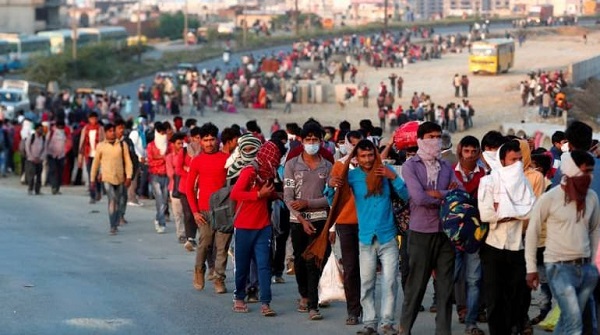P.K. Anand, Research Associate, ICS

The nationwide 21-day lockdown announced by Prime Minister Narendra Modi to contain the spread of the COVID-19 pandemic in India has completed 10 days. Being the second-most populous country in the world, India’s lockdown has been a massive exercise involving stopping all forms of public transport, closing down educational institutions, and recreational facilities, and all other avenues of gatherings/congregations across the vast territorial swathes of the country.
The lockdown has generated considerable debate not only on its viability and necessity, but also on its implementation and the resulting effects.
The incrementalism adopted in India’s approach ever since the outbreak in China occupied news space in mid-January — from airport screenings, to visa restrictions and later tracing of contacts and travels of infected people — has also been subjected to scrutiny by public health scholars and experts. The reasons for reluctance of the government to scale up testing at a mass level, even as cases spiked across India, appears to be twin-fold — to avoid a panic and chaos on one hand, and reckoning with the reality of a creaky health infrastructure, amplified by the lack of requisite resources, personnel and equipment, on the other. Even now calls for mass testing than just mere lockdown continues to go unheeded.
Even though Italy was the first country to impose a nation-wide lockdown, the playbook has emerged from China in its complete shutdown of Hubei province (while allowing other provincial and sub-provincial administrations to calibrate measures as deemed necessary in their jurisdictional regions). However, there has been enough reams and ink spent on explaining the impossibility of replication of the Chinese model — which has been undergirded by the authoritarian one-party state system that is decentralised, possessing extensive reach and high-organisational capacity — in democratic, diverse political systems. Further, the party-state massively employed technology to ensure social and political discipline. The party-state’s efforts to ramp up testing and large-scale mobilisation of resources have acted as force multipliers in its combat against the contagion even though the initial cover up, censorship and failure to track it in the first place have come in for criticism.
Nowhere has the planning and viability of the lockdown been questioned than by the heart-wrenching images of displaced migrant workers and their families, fleeing cities to their native places in the Indian hinterland on foot, riven with fears and anxieties of lost livelihoods and absent State support. In fact, these images and stories have generated significant traction to the argument of privileging the middle classes and urban elite in India, who have the wherewithal and space to practice social distancing as well as be able to exercise the option of work from home. Unlike them, the poor and daily wage, low-paid workers who constitute the informal sector and are at the frontlines in keeping essential services thriving, have a hand-to-mouth existence.
The images of migrants on the road also engages us to perhaps re-evaluate the often romanticised images of the massive movement of workers annually in China, for Chunyun, or the 40-day period with the onset of the Lunar New Year holiday, cramping through trains and other public transport (incidentally that movement this year was termed to have accentuated the spread of the virus).
That China’s migrant workers, often termed as floating population, have to traverse great distances to work in manufacturing and services, mostly in coastal regions or bigger cities, reflects the failure to develop viable regional economies. This is line with the high level of inequality prevalent in China, both regional and income related. The obduracy and rigidity of the country’s urban registration system — or, Hukou — that excludes the low-paid migrants from accessing rights and services in Chinese cities, also finds echoes in how ‘invisible’ the migrant workers have become in Indian scenario.
While democracy versus one-party state value judgements have often tended to dominate India-China comparatives, ideally the metric to test the State has to be State capacity; the ability of the State to provide goods and services to its citizens, especially during times of crises and distress. Herein, in spite of its authoritarian State system, with censorship and restrictions on freedom, China has a higher State capacity compared to India. That in turn, means a more formalised economy, with even social protections built into employment contracts (even if the implementation on the ground has been tardy).
Rome was not built in a day, and that applies for State capacity as well. Perhaps this pandemic and the lockdown, and the stark images left in its wake, will finally activate the Indian State to unlearn and learn, and reshape itself as a provider than remain only as an enforcer.
Originally Published as ‘Labour, lockdown and the State’s predicament’ in Moneycontrol.com, 3 April 2020